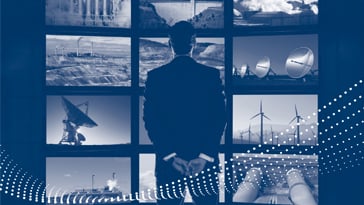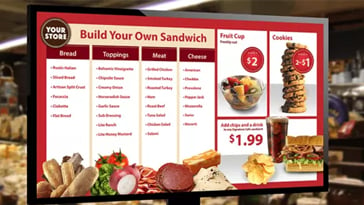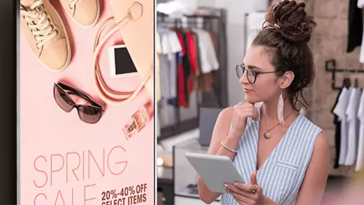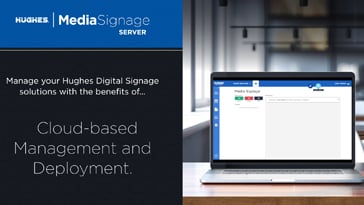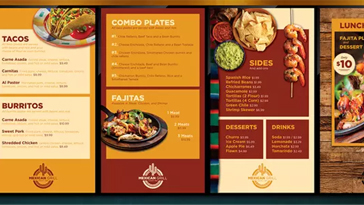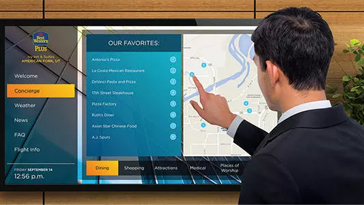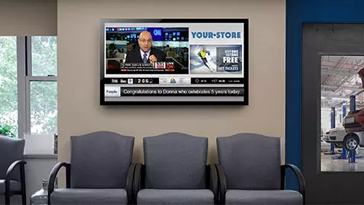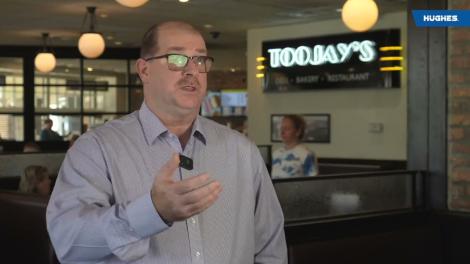Digital Signage Solutions to Amplify Your Message
Create immersive customer experiences and boost employee engagement with Hughes Digital Signage solutions.
Turn your employees into brand ambassadors and your customers into loyal buyers with turnkey digital signage solutions from Hughes. With decades of experience delivering innovative media solutions for enterprise customers, Hughes does it all. We can install, host, maintain, and support your digital signage, as well as integrate the technology with your network.
Our cloud-based Digital Signage for SmartTVs helps you deliver innovative, convenient, and flexible communications.
- Retailers: Use rich media to promote your brand, provide instant product information, offer useful third-party reviews, and integrate social media or custom apps for customer interactivity.
- Restaurants: If you’re a single outlet or a national chain, a digital messaging platform offers experiences beyond what’s on your menu. Visitors have become accustomed to having secure Wi-Fi and scanning QR codes for touchless menus when they eat out.
- Grocery: Elevate the customer experience at every turn and engage frontline associates to ensure they are up to speed on store offerings and changes.
- Government Agencies: Constituent visitors need real-time information when they arrive at agency offices and digital signage makes that happen. With integration to now-serving queue management and other data sources, the Hughes digital signage solution will enhance the visitor experience and improve services.
- Hotels: Central (and in-room) portals with digital concierge, weather, and transportation information help create memorable loyalty-building experiences for guests and deliver critical training for housekeepers and staff.
- Healthcare: Our cloud-based digital signage solutions support access, security, caregiver and patient communications and monitoring, plus help patients and visitors navigate sites and services.
- Franchise: Create a seamless and consistent experience across locations to deliver real-time brand messaging and consistent customer interactions that keep customers coming back.
- College & University Campuses: Today’s student is a visual, digital-first person and digital signage around the campus can inform students and faculty about activities, events, and even emergency situations. Our university digital signage solution is specifically designed to deliver a customized digital signage experience for universities and colleges.
Engaged employees are essential to an organization. Using digital signage to communicate with your employees improves the information flow, increases retention, and improves engagement. Also useful for front-of-house, enterprise digital signage enhances lobbies, hallways, entrances, and specialty departments. For both government and business, enterprise digital signage is an integral part of corporate communication and marketing plans.
Customer-facing Digital Signage:
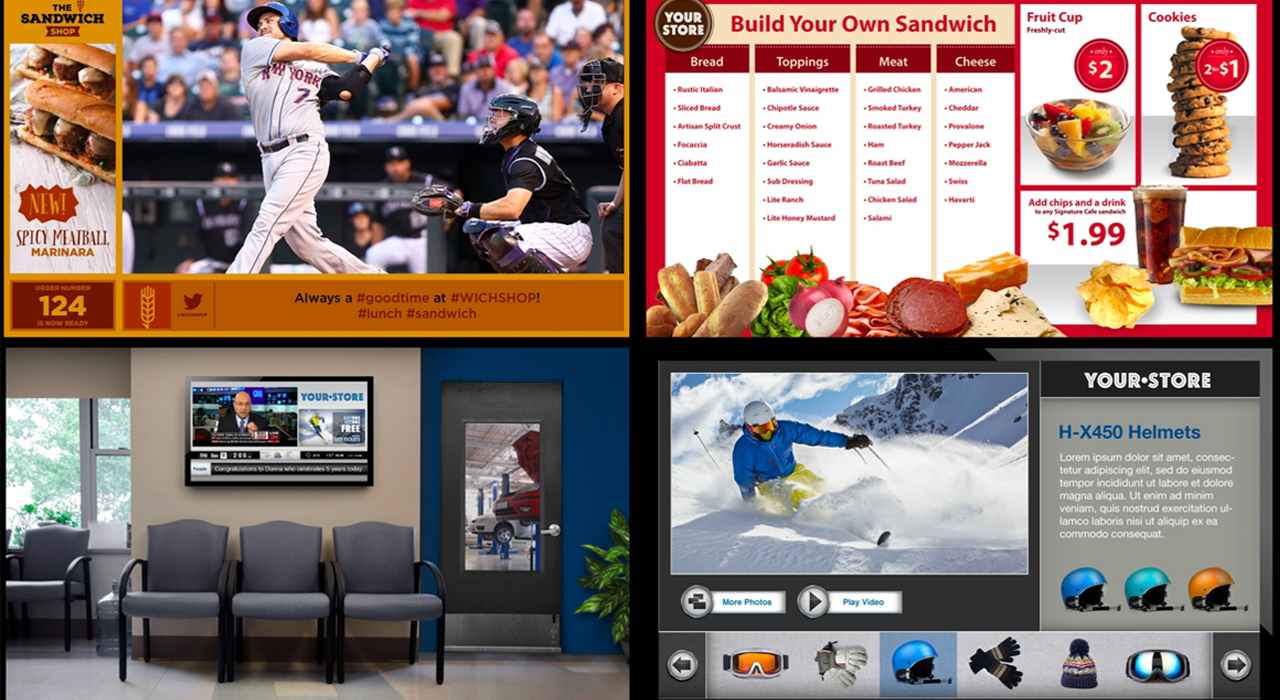
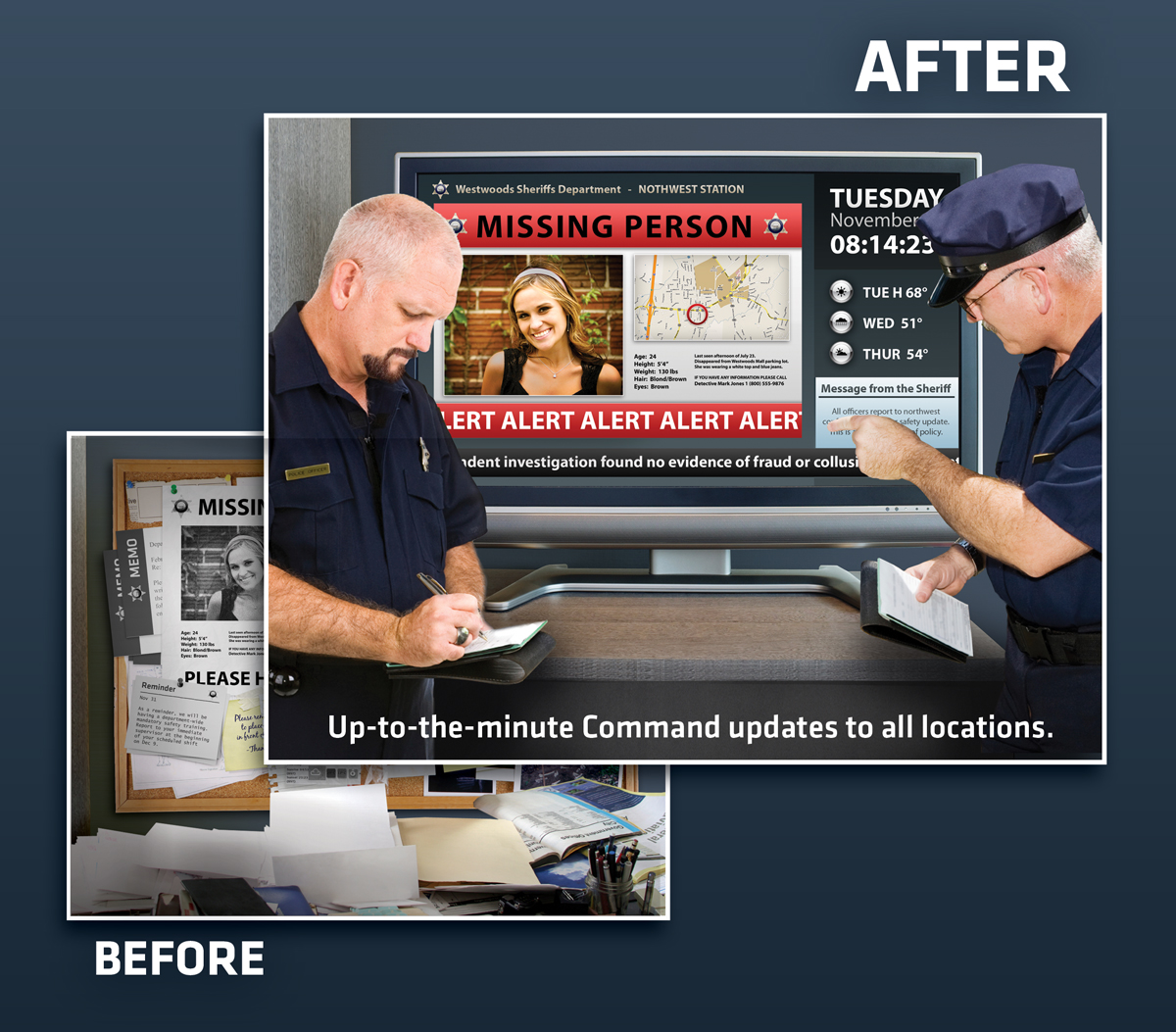
Public safety teams are on the front line, and they need fast, easy to read, content sources. Digital signage from Hughes is a great way to communicate important information as they move about their station.
The traditional methods of communicating with first responders, such as print signage or radios, are no longer adequate in a world where information needs to be displayed quickly and near real-time.
Hughes Digital Signage provides an easy-to-use platform for communicating important information to first responders. Our digital signage software is designed for mission-critical applications and used by leading organizations.
Contact Us for a Demo
Related Resources








